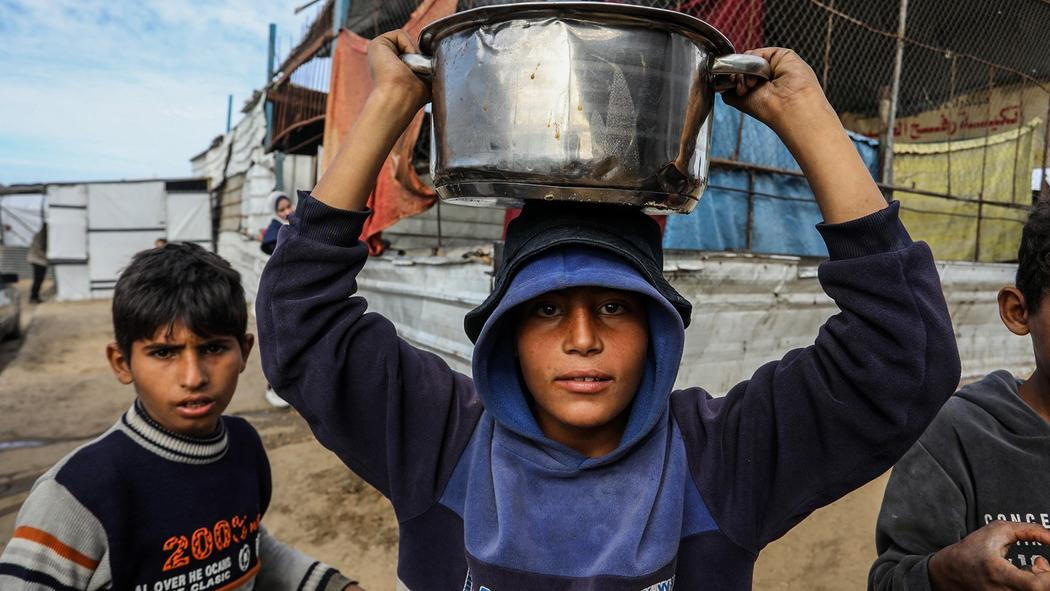Jay Olos is one of the most successful figures among the Philippine e-commerce and fintech scene, while his experience with the Southeast Asian market are not limited only to his native Phillippines. An entrepreneur who contributed to activities of companies with revenues reaching billions of dollars describes the fascinating world of the Asian market in an interview with Jan Růžička. "Us Asians, we love the social media, we seek the feeling of community in everything and that applies to shopping as well. Shopping is a for of an entertainment to us. If someone would just try to apply a model that works for him in the USA here without respecting these specifics, he would certainly fail," says Olos. "The Asian customer is also fascinating because of the fact that he enjoys the process of buying a product just like he enjoys the product itself," adds Olos.
Jay
Olos from Manila, Philippines is founder, strategist, manager, and
celebrated entrepreneur, who has been – throughout the years – an
extremely influential persona in the Asian fintech world. He was a
president of Moneymax, which is a key leading personal finance
platform in the Philippines, then he was a CFO of CompareAsiaGroup,
currently Hyphen Group. That is the largest finance aggregator with
more than 10 million B2C customers and serving more than 200
financial institutions in six markets across Asia. Then he was
running GCash/Mynt, which is the hottest mobile wallet in Manila,
partially owned by Jack Ma. And now he is a CFO of PayMongo, which is
a fast-growing fintech start-up supported by big guys such as Peter
Thiel, Bedrock Capital, Y-Combinator and Stripe.
Happy to meet you again, Jan and thanks for the invitation.
Let's
hit the road and start with the most important component that enables
all this e-commerce and fintech buzz in Asia, that you have been
involved with. Customers - tell us more about them, what are their
aspirations and dreams, what they are into and how can the companies
communicate with them successfully?
I know the customers in South-East Asia quite well because I am one of them and because I have been also working with them for years now. South-East Asia region starts in my home country of Philippines, then you have Papua, Indonesia, Malaysia, and Singapore, which is together with Hong Kong a start-up Mecca of the region. And you also have Vietnam, Thailand, Laos, and Cambodia. So, it is very fragmented geography, with different countries and people who have quite different preferences.
On the other hand, there are basic commonalities that bind all people together. First and foremost, a typical Southeast Asian customer is in love with the social media. He loves to watch funny videos and adores anything that engages him online. We are, myself inclluded, quite gung-ho about spending time on Facebook and other social media, so that is how we discover new products and brands.
In some places, especially in more emerging countries, lot of localization is needed to really engage customers. Just bringing the business and engagement models that work well for example in the U.S. would definitely be a failure. Companies also need to listen to specific circumstances at the time. For example, now everybody wants to get tested because of COVID and also to get the info about vaccines, pandemic situation and healthcare advices. Telemedicine and e-health are so hot. So, we responded to this customer’s call and now at our firm our strategic partner is the Red Cross. They've been experiencing a surge in their COVID testing services and we facilitate everything for them via our systems. So, you always need to think how to improve your gig, what do your customers want “now” and to deliver it quickly. That’s Asia!
Why
do you think that the customers in your region are so digitally
savvy? In my home in the Central Europe, to be digitally native is
still more associated with the Gen Z and younger Millennials, but
here I see even old grandmothers with e-commerce apps and on social
media...
Everything was massively accelerated by the Covid pandemic. Back in the early days, ten years ago, the first online adopters here were also Millennials and working professionals. Those yuppies were the first customers of the super apps like Grab, Gojek and Uber.
Nowadays, due to the increasing penetration of apps and social media and thanks to digital influencers and creative marketing, online world has become mainstream. Also, those young pros from ten years ago have become parents and they are passing digital savviness on their children, but also on their elderly parents.
Do
you have some examples?
I am exactly that case myself. In the past I was just a millennial young professional, but now I'm turning into a father with higher disposable income. Plus, I have the influence within my household and over my extended family, my uncles, aunties, grandfathers, grandmothers etc. And thanks to that, I can tell you, my father and mother-in-law are more active on social media and Lazada or shopping online than myself and my wife.
Initially they were very hesitant. There was resistance and they used to ask: “Can I actually trust this app? Will my money be safe there?” You know, there was a lot of incidents of fraud in the early days. But now thanks to ever increasing cybersecurity and the central bank rules, we are also seeing increasing trust and confidence of the mainstream customers, the elderly ones included.
It
is logical why young people are comfortable going online; they were
born into a world that was already connected. But if we stick with
the example of your father and mother-in-law, what drives them
towards being online now? Yes, they have already made that initial
click but what retains their interest? Is it about coupons and
discounts or do they like aggregators that allow them to see what is
cheaper or easier? Why do you think that the older generation is now
fully online?
I think it is all about the community nowadays. Older people can´t go outside due to Covid, lockdowns are still enforced here in our region, plus many people are naturally lonely. So, they’re looking for ways to stay entertained and engaged with their amigos, amigas, their folks, basically their circle. And Facebook chats and Facebook groups are their way of how to stay in touch. And along the way they see not only their friends, but also...they see ads. Many ads. And ads bring them towards new products and services and to new ways how to buy them. Via e-commerce platforms, with virtual money.
Finally, these products pop up on their newsfeed and they are seen by their friends, who start chatting about them. The circle is closed...
How
was it in your family?
My father went online because he was bored by just staying at home. It all started for him with Candy Crush, if you know the game. He then really got into playing online games and then suddenly, he recognized that there is also option to purchase some coins for the games, so he can level up to the next stage. And this gamification moment was really addictive for him. Then he started to ask questions like: “How can I actually buy some goods using these coins,” so then, being a fintech guy, I explained all the logic to him and then he started to explain everything to his friends, and it spread through his network, like a viral thing. Again, the circle has closed.
You mentioned a number of interesting points that we will go through one by one. But one thing that struck me immediately was when you mentioned your father playing games and understanding coins. Yesterday on CNBC, I watched an interview with the founders of Coinbase and they talked about how they clicked with the coins and the crypto: it was in the game World of Warcraft! They were very keen gamers and in the artificial world coins are very normal, so it became native for them. They thought “Hey! I have it in the game, so why not to embrace it in the real world as well.”
So
broadly speaking I do believe that gamification is critical factor
and here in Manila, or in Hong Kong, people really love the
combination of buying things and having fun. There is even a word for
this: ‘shoppertainment’ when these young girls are unboxing
products from Alibaba, Lazada or Shopee and thousands of people are
watching them, commenting, and having fun.
Yes,
people here do love fun, they love games, and they find this extra
satisfaction on top of just buying a product as an important element.
To have fun and to be able to tell their friends about it and share
it. I lived in Hong Kong for 6 years so I can attest it´s also
similar there. The whole Asia is like that. People here like
freebies, discounts, coupons, and they will line up just to get a
freebie. This is very unique, that we actually enjoy the process of
buying a product as much as the product itself.
Another thing that you´ve mentioned and which is connected to gamification and fun is a sense of online community. For me, as a European, when I go to Amazon to buy something, I am not posting reviews or sharing that with friends. If I want something, I go online, I buy it and that’s it. Maybe I will look at an aggregator site first to decide which merchant to buy from, but I don’t need nor look for a sense of community.
And
here in Asia, it is so different. Btw I read a book about Alibaba and
their beginnings 25 years ago when they were fighting with eBay. And
eBay lost because they didn’t understand nor incorporated this
sense of community on Asian markets. They completely missed that this
is a key ingredient.
I think for our readers, the first thing they need to know when they go to Southeast Asia is that everything here is always relationship-based. Business and purchases included. I've seen a lot of deals get closed because the deal makers were able to establish a really good relationship first before the economics of the deal. So that's the behavior of the market and also the behavior of the consumers. Everything here is a trust-based system, because we are so much extremely family and community oriented. We trust our family, and we don't limit it to our mother, brother, father, instead we have an extended family concept. Sometimes this even includes our neighbors, and we also think of them as of a family. So that's how tightly knit an Asian community is. And I guess that's the reason why a lot of Asians really love the gamification, really love getting reviews first-hand from their friends rather than googling it.
How
can you combine this with e-commerce? The trust-based systems are
very much offline things: we go for a beer together, we work
together, we grew up together… So then, when you recommend
something to me, I trust you. But how do you recreate this feeling
online?
That's obviously a tough problem to crack for any techie or founder. It starts with demographics. Younger people these days are satisfied with the online reviews, so once they find online reviews, they're okay with that, regardless of whether it comes from Reddit or Zomato. But really mass-market people still want to get an offline word-of-mouth assurance from their friends, folks, and family members. Therefore, I say that marketing here should always be a combination of online and offline. You cannot just spend marketing dollars purely online, because there is still a lot of folks that cannot be reached online because of the infrastructure problems. It’s a matter of finding the right balance between online and offline marketing to bridge that gap. And when being online, always, like literally always, try to create an offline community touch and feeling as much as possible.
I´ve
read somewhere that after COVID is over, we shall expect a little bit
of a revival of offline, exactly because of what you´ve just said.
People want to have a real feeling and touch that the online
interface cannot provide fully. So, maybe first I will read about the
product online and then I will go to the store to touch it and yes,
maybe I will still order it online in the end of the day as well. So
online to offline to online. Funny. I believe also that customers
would like - after the pandemics is gone - to have this retail
experience again. To go to a nice shop, buy the product physically,
chat with sales assistant, get some freebies and experience the
sights, sounds, and smells of the shops. How you think this will
evolve?
Here in the Philippines, the Filipinos are known for being the most engaged in social media, we love them, but we still shop offline. A lot of us still want to go to the mall and that's not because we don't trust the online reviews, but because we want that offline experience of going there. It's more of an experiential thing rather than an issue of online trust. Malls here are a leisure activity for us, a form of recreation. It’s similar to Indonesia and other countries around as well, I think. We have the same DNA, being super-hot countries. We literally want to be at an air-conditioned environment and malls are ideal place.
Let's
enjoy the air con!
Yes! It's a free air con, free WIFI and a lot of other freebies inside the mall. There's also a lot of entertainment so you can do everything offline, while staying chilled.
Therefore, my thinking is that customers want to get to know about your product online, but you cannot forget the fact that a lot of them will still prefer to go offline later on. At least in my experience, there are certain products that I would really want to see and touch in person before buying them.
Which
ones? Luxury or…?
Not only. I will share my personal experience once again: Right now, I'm trying to build a house and I want to see the tiles, I want to feel the surface texture and how it looks like. And I don't want to rely on online reviews because this is a big project for me, and I want to make sure that everything will be okay.
Furthermore, let’s not forget that large portion of the Asian population is still unbanked, which means they don’t have any deposit account, no credit card, just cash. So, even though these people do buy products online, they still tend to pay C.O.D. (cash on delivery). This is still a big challenge in the Philippines, because country consist of thousands of islands and good infrastructure is not everywhere. Therefore, I believe there will still be an offline presence.
Plus,
you really adore your mega-malls. I can confirm that totally. When I
was in Manila last time, before the COVID, a friend of mine wanted to
show me how Filipinos spend their ‘leisure time’ in the
supermarkets. It was quite a something. On a Sunday morning the whole
city went to the supermarket. First – and I have never seen this
anywhere in the world – there was a huge catholic church in the
center of the supermarket. So, everyone went to the church for a
mass, then lunch, then shopping, then cinema, then theme park...so
they spent literally the whole Sunday in the supermarket.
There are two reasons why the church was there. Firstly, Manila is known for extremely heavy traffic, and it would be very inconvenient to go to mass at one place and then go for a lunch somewhere else. This is practical arrangement. And secondly not everybody owns a car, so transportation is really a painful point even now with the presence of the ride-hailing apps like Grab or Uber. The mall owners try to be the ‘go-to place’ for everything, for any Filipino, because they want their users to be engaged all the time, to maintain the stickiness, the retention. It is btw very similar to what we do in our apps - we want our users engage all the time. To create the stickiness. So, the malls are doing a similar thing in the Philippines hence the church and a variety of other things.
So,
supermarkets in Manila are almost like offline super-apps!
Yeah,
an offline super app, that’s true. Haha.
This
is another differentiation between Europe and Asia, these super apps.
That you have like 40 different functions inside a single app. Can
you tell us a bit about them?
I´ll be happy to! The super-apps combine a big number of functions in a single app: car sharing, bike rents, food delivery, WhatsApp function, communities and groups, e-commerce, marketplace, finance and so on. In many cases also the media, TV and movie sharing, similar to Netflix.
And there are many big apps in our big countries - Jack Ma and Alibaba don’t control everything. Maybe on the contrary. There is a super app in Indonesia, another one in Hong Kong, China, Singapore, Vietnam, South Kore and so on. It also depends on what vertical or what product do you use your app for primarily. For example, for ride-hailing I would say everybody uses Grab, because Uber is no longer here, but for food delivery you have a bunch of options. Grab also has GrabFood. What else? Of course, you have Foodpanda and Deliveroo, for example…
If
we go back several years and look at the Forbes magazine or
TechCrunch, a lot of people really believed that the future would be
a fight between Amazon and Alibaba. But this hasn’t happened
because, as you said, Ali and Tencent might be omnipotent in China
but there are other companies like Suning, JD.com, etc. even there.
Plus, you have Lazada in Southeast Asia, you have Tokopedia, Akulaku,
Grab, Kakao, Momo, Gojek, there is plenty of super apps or digital
companies that are doing extremely well and are able to challenge
both Ali and Amazon. So, what is it about, is it about localization
and cultural differences?
Yes, localization, cultural differences and of course, I will address the big elephant in the room, it’s also about the shareholder structure and the ‘who’s who’ basically. Because there are certain countries that are still restrictive in terms of foreign ownership and legalities. In Philippines, we have what we call the foreign investment negative list. So not everyone, not every foreign company who wants to establish a business here, can do that. There's a variety of restrictive laws. Similar laws are in China or in India. Protectionism is a bit of a trend here.
How
does this work in practice for you as an entrepreneur?
It is a double-edged sword. It is a good thing, because it gives the local founders an ability to develop on their own and to create the ecosystem on their own. At the same time, there's a downside in the sense that innovation is very slow. For example, here in the Philippines, I know a lot of brilliant Filipino founders and executives, who have the skill set and the capability to build great things, but because of the restrictions on foreign direct investment, they were not able to really bring our ideas and products to life.
Jay Olos, CPA, CFC, FMVA, AFP
Jay has extensive international leadership experience in building and scaling fast-growing start-ups in the US, Hong Kong, Singapore, Taiwan, Malaysia, Thailand, Indonesia, and the Philippines. He's currently the CFO of PayMongo, company invested by Peter Thiel, Stripe, Y-Combinator and others. He formerly served as CFO of GCash and President and Chairman of MoneyMax. He's a founding team member of Southeast Asia’s leading digital finance platform, Hyphen Group (formerly CompareAsiaGroup), where he built its finance function from scratch and raised Series A & B ($110 million) from some of the well-known investors of the world.
Jay is a Certified Public Accountant, a Certified Financial Modelling and Valuation Analyst, a Certified Financial Consultant and an Associate Financial Planner. He also worked as an auditor for PwC and KPMG early in his career.
PhDr. Jan Ruzicka, MBA
Jan is a Chief External Affairs Officer at the Home Credit Group, the world’s leading consumer finance provider. Based out of Hong Kong, Jan runs company networks in the US, Asia and Europe. Before that, he used to live in Beijing, Cambridge and Prague. He even spent ten years working for the Czech Government, advocating and shaping the health reform as the Director-General at the Ministry of Health.
Jan teaches Behavioural Economy and the Disruption of Finance and Healthcare at universities in Asia and Europe. He is especially interested in how innovation can create financial inclusion and health equality.
In the second part of the interview, you can look forward to Jay Olos sharing his insight into the Asian fintech world as well as telling his story of entrepreneurship success.









